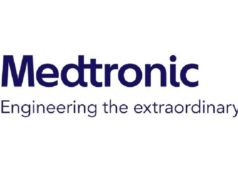
Physicians from the University of California, San Francisco, USA, report that resection is safe and effective in children with pharmacoresistant focal epilepsy but seizure outcomes could be improved through aggressive resection in select patients. They add that high-resolution neuroimaging and invasive electrographic studies could be beneficial.
According to the study’s lead author, Dario J Englot there is differences in epilepsy type and pathological substrates between children and adults. He explains that because young children have greater neural plasticity and potential for neurological recovery than adults, extremely aggressive resection such as hemispherectomy would be devastating in an adult, adding that critical functions such as language and motor abilities are more likely to improve post-operatively in a young child, due to reorganisation of eloquent cortex.
However, they say that, although resection is a tried and tested treatment method, some patients continue to experience seizures post-surgery.
Englot and colleagues performed a retrospective cohort study of children and adolescents who underwent focal respective surgery to determine the reasons for surgical failure. They also performed quantitative and qualitative analyses of factors associated with persistent post-operative seizures. The results were published in the Journal of Neurosurgery: Pediatrics.
They reviewed data from 110 patients (115 resections) and found that 76% of patients were free from disabling seizures (Engel Class I outcome) at a mean follow-up of 3.1 years.
They say that freedom from seizures was predicted by temporal lobe surgery compared with extratemporal resection, tumour or mesial temporal sclerosis compared with cortical dysplasia or other pathologies and by a lower preoperative seizure frequency.
From their findings, it was demonstrated that factors associated with persistent seizures (Engel Class II–IV outcome) were residual epileptogenic tissue adjacent to the resection cavity (40%), an additional epileptogenic zone distant from the resection cavity (32%), and the presence of a hemispheric epilepsy syndrome (28%).
“While seizure outcomes in paediatric epilepsy surgery may be improved by the use high-resolution neuroimaging and invasive electrographic studies, a more aggressive resection should be considered in certain patients”, Englot et al state.
They conclude that aggressive resection should extend to hemispherectomy, if a hemispheric epilepsy syndrome is suspected. Englot told NeuroNews: “While it is critical to carefully tailor resections to avoid neurological deficits, it is also true that seizure-freedom is the strongest predictor of quality of life. In our view, an aggressive resection involves maximal removal of tissue that is involved in the epileptogenic zone, while preserving eloquent brain regions to the greatest extent possible. For example, in a child with epilepsy caused by a benign brain tumour (e.g. ganglioglioma), a limited resection might involve lesionectomy alone, while an aggressive resection may include intraoperative interictal electrocorticography to delineate epileptogenic peri-tumoral cortex which should also be removed.”
They add that the patient should receive counselling on treatment expectations as reoperation may be required in some cases.













